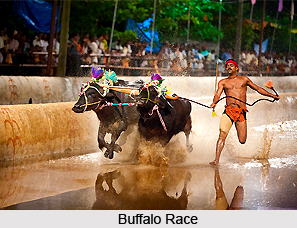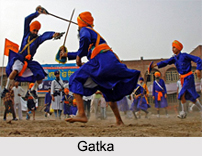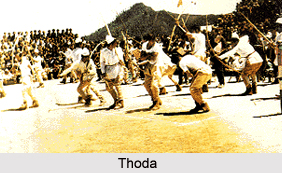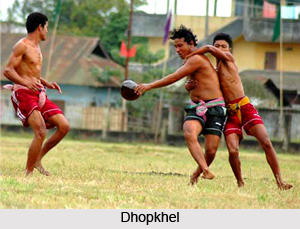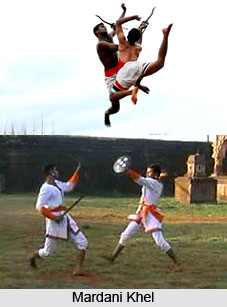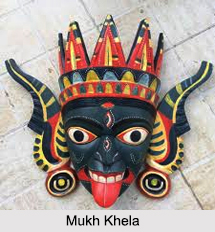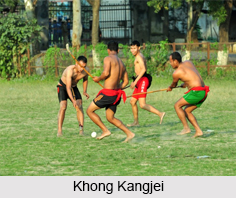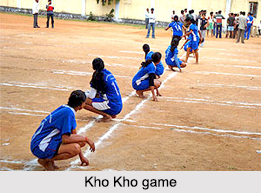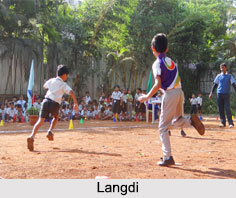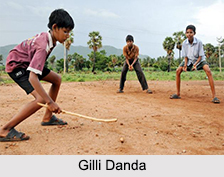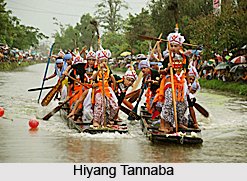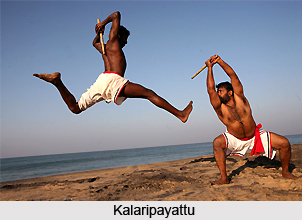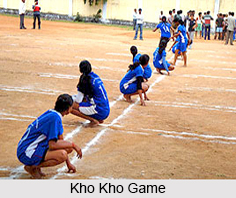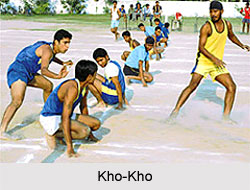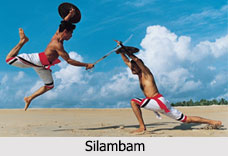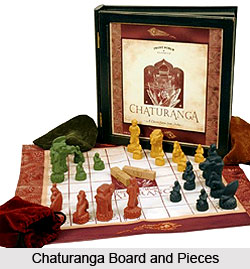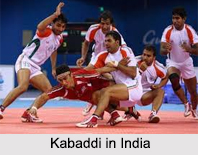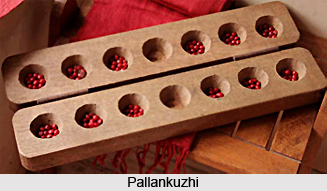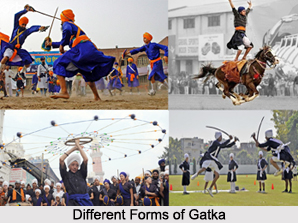 In the medieval era, the forms of gatka are referred to as "yudhan". The gatka schools in Punjab, Haryana, Himachal Pradesh, Uttar Pradesh, Madhya Pradesh , Chhattisgarh, Bihar, Jammu and Kashmir and Chandigarh make use of mainly freestyle routines each governed by particular principles rather than the preset forms of other systems.
In the medieval era, the forms of gatka are referred to as "yudhan". The gatka schools in Punjab, Haryana, Himachal Pradesh, Uttar Pradesh, Madhya Pradesh , Chhattisgarh, Bihar, Jammu and Kashmir and Chandigarh make use of mainly freestyle routines each governed by particular principles rather than the preset forms of other systems.
There are altogether ten "yudhan" which, when taken as a whole, collect all the techniques and strategies of "gatka". The first six forms imitate animals and are grouped under Khat Ang Yudhan meaning "six parts" or "six limbs". The seventh form collates the previous six into a seamless whole. The final forms are based on deities and are grouped as Deva Ang Yudhan meaning "limbs of the gods".
Jat ka gatka
The Jat style of gatka is sometimes incorporated as a yudhan to acquaint beginners with basic asana (stances) and tactics, although many masters refuse to acknowledge it due to the form`s peasant origins. The most basic stance (mulasana) is a crouching position which provides a stable base from which to launch attacks and avoid being knocked down.
Boar
The boar style is associated with the varaha avatar of Lord Vishnu. This form of gatka is originated in Bihar. It specializes in close-quarter combat and short explosive strikes with the fists, elbows, knees, feet and single knuckles.
Snake
The snake style is known as `Shesha-naga Yudhan". It is named after the serpent Lord Shesha. Acting as a counter and complement of the boar style, it is based on the cobra (naga) and python (ajagara).
Eagle
Garuda Yudhan or Eagle styled gatka is variously rendered in English as the bird style or eagle style. It was originated in Jammu and Kashmir. It is named after the mythical character "garuda". It imitates four different birds, namely the peacock (mayura), eagle (garuda), goose (hamsa) and rooster (kukkuta). It specializes in hit-and-run tactics, mimicking a bird flying at its prey. It is characterized with an angling side-to-side motion. The techniques include attacks delivered with the hands and feet, elbows, knees, sweeps, and stomps in the case of a downed opponent. The garuda style is most notable as the basic sword-fighting form and the first yudhan in which upper body armor may be worn.
Bull
The bull style is named Nandi Yudhan after Nandi, the mount and gatekeeper of Lord Shiva or Mahadeva. It was originated among the people, who reside in the foothills of Himalayan Mountain Range. It is the first grappling style and specialises in upright grabbing. The counter and complement of garuda, the bull is also a skirmishing style which can be used on foot or horseback.
Lion
The "Narasingha Yudhan" is named after the Narasingh avatar of Lord Vishnu, variously depicted as a man with the head and claws of a lion, tiger or leopard. It was used to support the vanguard during battle and therefore favours armed combat and specializes in fighting heavily armoured opponents
Monkey
The monkey style or Hanuman Yudhan has its origins in Central Indian states like Madhya Pradesh and Chattisgarh, particularly around the modern border of Indian state of Maharashtra and the Deccan Plateau. It is named after the monkey god Lord Hanuman.
Leopard
The leopard or panther form is called “Bagh Yudhan†in Hindi and is associated with the mount of Goddess Durga. It is originated in the Himalayan Mountain Range areas. It is regarded as the seventh animal style even though they are numbered at six
Bhawani
The first of the Deva Ang Yudhan is named for the eight-armed goddess Ashtabuja Devi. It is divided into four sub-styles, representing the various aspects of the devi. The first sub-style is Chandi Yudhan, known for its graceful, elegant movements imitating the goddess as a beautiful young girl. Chandika is well-suited for fighting multiple opponents and specializes in gatti sakti, using their own energy against them.
Kali Yudhan
Kali Yudhan is a more direct and aggressive version of Chandi, which aims to kill as quickly as possible and specialises in confusing and misleading the opponent.
Jagdambeh Yudhan
Jagdambeh Yudhan makes use of quick footwork to circle around the opponent in a manner similar to Chinese baguazhang. Its more aggressive counterpart is the Kalika Vambrolah Yudhan or "Whirlwind Kali" form.
Shiva
Shiva Gatka is known as Adi Deva Yudhan or Primordial God Form. It is divided into four sub-styles. In contrast to the goddess form, Adi Deva represents akarshan sakti or gravitational energy. Shiva Yudhan specializes in unbalancing and manipulating their centre of gravity. Ganpat Yudhan is much the same but with a focus on grappling and facing a larger opponent. Jaganatha Yudhan focuses on quickly moving in on the opponent and striking at pressure points while avoiding their attacks. The highest of the Adi Deva forms is Mahakala Yudhan which was traditionally employed by an army`s vanguard. Like the other sub-styles, it also relies on misalignment while closing in, but with an emphasis on snapping the opponent`s neck.
Harihara
The final yudhan is named Ardhanarishvara Yudhan after the androgynous composite of Lord Shiva and Parvati. It combines all the forms into a single seamless whole, to the point that the exponent reacts spontaneously without thinking and all forms become "formless".
